 W
WThe Battle of the Arar was fought between the migrating tribes of the Helvetii and six Roman legions under the command of Gaius Julius Caesar in 58 BC. It was the first major battle of the Gallic Wars and ended in a tactical victory for the outnumbered Roman army.
 W
WThe Battle at Pontes Longi was fought near Bramsche, Germany in 15 AD between the Roman general Aulus Caecina Severus and an alliance of Germanic peoples commanded by Arminius. It was part of a three-year series of campaigns by Germanicus in Germania. The battle was inconclusive.
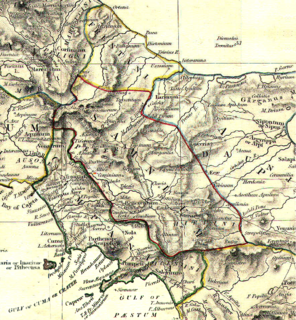 W
WThe Battle of Aquilonia was fought in 293 BC between the Roman Republic and the Samnites. The Romans, led by the consul Lucius Papirius Cursor, were victorious.
 W
WThe Battle of Beneventum was fought between Carthage and Roman republic in 212 BC. During this conflict Hanno, son of Bomilcar was defeated by Quintus Fulvius Flaccus. Livy gives a short account of this battle at 25.13-14.
 W
WThe Battle of Brumath in 356 AD was part of Roman Emperor Julian's campaigns against the Germanic tribes. Following the Battle of Reims, Julian's forces pursued several Germanic war bands through the Gallic countryside. Outside Brocomagus (Brumath), one war band met Julian in open battle and the Romans were victorious.Hearing therefore that Strasburg, Brumath, Saverne, Seltz, Speyer, Worms, and Mayence were held by the savages, who were living on their lands, he first of all seized Brumath, but while he was still approaching it a band of Germans met him and offered battle. Julian drew up his forces in the form of a crescent, and when the fight began to come to close quarters, the enemy were overwhelmed by a double danger; some were captured, others were slain in the very heat of the battle, and rest got away, saved by recourse to speed.
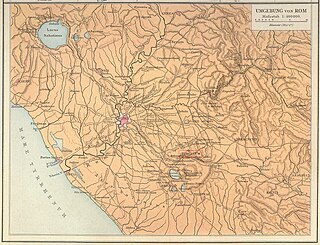 W
WThe Battle of Corbio took place in 446 BC. General Titus Quinctius Capitolinus Barbatus and legatus Spurius Postumius Albus Regillensis led Roman troops to a victory over the Aequi tribes of north-east Latium and the Volsci tribes of southern Latium. The Romans had already defeated the Aequi in the Battle of Mount Algidus, so that the Battle of Corbio definitely marked the dominion of the Romans over this tribe.
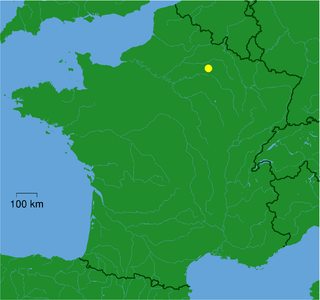 W
WThe Battle of Reims or Battle of Durocortorum was fought in 356 between the Western Roman army led by Western Roman Emperor Julian and the Alemanni. The Alemanni were victorious.And after staying there [ Troyes ] a short time, out of consideration for this tired soldiers, he felt that he ought not to delay, and made for the city of Rheims (Durocortōrum). There he had ordered the whole army to assemble with provisions for a month and to await his coming; the place was commanded by Ursicinus' successor Marcellus, and Ursicinus himself was directed to serve in the same region until the end of the campaign. Accordingly, after the expression of many various opinions, it was agreed to attack the Alamannic horde by way of the Ten Cantons [ Dieuze] with closed ranks; and the soldiers went on in that direction with unusual alacrity. And because the day was misty and overcast, so then even objects close at hand could not be seen, the enemy, aided by their acquaintance with the country, went around by way of a crossroad and made an attack on the two legions bringing up the rear of the Caesar's army. And they would nearly have annihilated them, had not the shouts that they suddenly raised brought up the reinforcements of our allies. Then and thereafter, thinking that he could cross neither roads nor rivers without ambuscades, Julian was wary and hesitant,
 W
WThe Battle of Korakesion, also known as the Battle of Coracaesium, was a naval battle fought in 67 BC between the Cilician Pirates and the Roman Republic. It was the culmination of Pompey the Great's campaign against the pirates of the Mediterranean; Plutarch describes it as the key battle of Pompey's clearing of the Mediterranean of pirates after several smaller battles. According to Plutarch the pirates had about a thousand ships against Pompey's two hundred, but were defeated in the initial naval engagement. Florus also states it was not a hard-fought affair as the pirates soon realised they were out-classed and most of them simply surrendered. After retreating to the shore, the remaining pirates were apparently besieged in the town of Coracaesium, modern day Alanya, before surrendering.
 W
WThe Battle of Lingones was fought in 298 between the Western Roman Empire and the Alamanni. The Roman force was led by Constantius Chlorus, and was victorious.
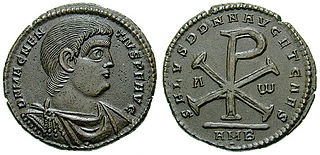 W
WThe Battle of Mons Seleucus was fought in 353 between the forces of the Roman emperor Constantius II and the forces of the usurper Magnentius. Constantius' forces were victorious, and Magnentius later committed suicide.
 W
WThe Battle of Mount Tifata was fought in 83 BC as part of Sulla's Second Civil War. It was fought in the foothills of Mount Tifata, a spur of the Apennines, close to the River Vulturnus, and is alternatively known as the Battle of Casilinum. The location of the battle suggests that Sulla was moving on Capua. The Optimate forces were led by Lucius Cornelius Sulla and his officer Quintus Caecilius Metellus, while the Populares were led by Gaius Norbanus. The battle started when Sulla “immediately attacked” Norbanus, even though Velleius claims Norbanus attacked Sulla. As an army under Scipio was currently moving to support Norbanus it is likely that Sulla attacked Norbanus by surprise before he could link up with Scipio. In total Scipio's and Norbanus’ armies numbered 100,000 as compared to at most 40,000 under Sulla. Sulla was victorious. Afterwards Sulla besieged Norbanus in Capua.
 W
WThe Siege of Narbonne was a conflict between the Visigothic Foederati of Aquitania and the Western Roman Empire. The siege began in late 436 and carried over into 437, when the Roman Magister Militum Litorius arrived with a force of Huns and the Gallic Field Army. Litorius surprised the Visigoths and routed their army before they could draw up a coherent battle line. Prosper of Aquitaine records that to alleviate the starvation of the city, each soldier in Litorius' army was ordered to carry two measures of wheat for the citizens of Narbonne.
 W
WThe Battle of Nepheris was the second battle of the Third Punic War that took place at Nepheris in 147 BC. The battle was fought between the forces of the Roman Republic, commanded by Scipio Aemilianus, and the forces of Carthage who were commanded by Diogenes of Carthage.
 W
WThe Battle of Nicaea was fought in 193 between the forces of Septimius Severus and his eastern rival, Pescennius Niger. It took place at Nicaea in Asia Minor. Severus defeated his rival, and ended his bid for the Roman Empire the next year at Issus.
 W
WThe Second Battle of Nola was fought in 215 BC between Hannibal's army and a Roman Army under Marcus Claudius Marcellus. It was Hannibal's second attempt to seize Nola after a failure the year before. He was again repelled and would make one more, also unsuccessful attempt the next year.
 W
WThe First Battle of Nola was fought in 216 BC between the forces of Hannibal and a Roman force led by Marcus Claudius Marcellus. Hannibal was attempting to seize the town of Nola: He failed to do so, and would make two more unsuccessful attempts on the city over the next two years.
 W
WThe Battle of Ravenna, capital of the Western Roman Empire, between the Heruli under their King Odoacer and the remnants of the Western Roman Army in Roman Italy occurred in early September 476. The Roman Empire had been in relative decline since the beginning of the barbarian invasions and Rome, the symbolical heart and largest city of the Western Empire, was sacked in 410 by the Visigoths and in 455 by the Vandals. By 476 the Roman Emperor was little more than a puppet, having very little de facto control of any territory outside of Italy. The last Roman emperor, Romulus Augustulus, was not recognized as a legitimate ruler outside of Italy; the Eastern Roman Empire recognized Julius Nepos as the true Western Roman Emperor.
 W
WThe Battle of Rimini was fought in 432 between the two strong men of the Western Roman Empire, the very recently deposed Magister Utriusque Militiae Flavius Aetius and the newly appointed Magister Utriusque Militiae Bonifatius.
 W
WThe Battle of Solicinium was fought in 368 between a Roman army and the Alemanni. The Roman force was led by Emperor Valentinian I, and they managed to repel the Alemanni but suffered heavy losses during the battle.
 W
WThe Battle of Tarentum of 209 BC was a battle in the Second Punic War. The Romans, led by Quintus Fabius Maximus Verrucosus, recaptured the city of Tarentum that had betrayed them in the first Battle of Tarentum in 212 BC. This time the commander of the city, Carthalo, turned against the Carthaginians, and supported the Romans.
 W
WThe Battle of the Asio River took place in March of 82 BC during the context of Sulla's Second Civil War. The battle pitted the Optimates under the command of Quintus Caecilius Metellus Pius and Gnaeus Pompeius Magnus against the Populares forces commanded by Gaius Carrinas. This battle marked the start of this phase in the civil war and resulted in an Optimate victory.
 W
WThe Battle of the Margus or Battle of Margum was fought in July 285 between the armies of Roman Emperors Diocletian and Carinus in the valley of the Margus River in Moesia, probably near the settlement of Margum. The battle proved to be the tipping-point that led to the eventual resolution of the Crisis of the Third Century and the return of stability to the Empire.
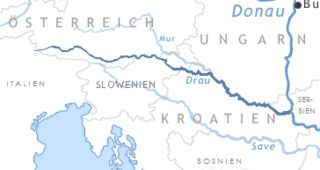 W
WThe Battle of the Save was fought in 388 between the forces of Roman usurper Magnus Maximus and the Eastern Roman Empire. Emperor Theodosius I defeated Magnus Maximus's army in battle. Later Maximus was captured and executed at Aquileia.
 W
WThe Battle of Thessalonica was fought in the summer or autumn of 380 by Fritigern's Goths and a Roman army led by Theodosius I. Reconstituted after Adrianople, the East Roman army suffered another major defeat. Theodosius retreated to Thessalonica and surrendered control of operations to the Western Emperor, Gratian.
 W
WThe Battle of Trifanum was fought in 340 BC between the Roman Republic and the Latins. The Roman force was led by Manlius Imperiosus. He pursued the Latins to the north following the Battle of Vesuvius and met them at Trifanum near the mouth of the Liri River. Livy records that the two forces dumped their baggage and fought where they met. He claimed that the Romans were victorious and that their victory was so crushing that afterwards, when the consul entered Latium, the Latins immediately surrendered. As the war continued for another two years it may be that the Latins were surprised at Trifanum and dispersed.
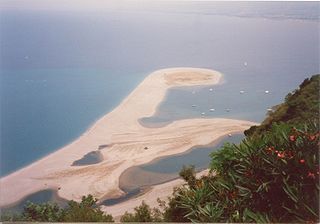 W
WThe Battle of Tyndaris was a naval battle of the First Punic War that took place off Tyndaris in 257 BC. Tyndaris was a Sicilian town founded as a Greek colony in 396 BC located on the high ground overlooking the Tyrrhenian Sea in the Gulf of Patti. Hiero II, the tyrant of Syracuse, allowed Tyndaris to become a base for the Carthaginians. The battle took place in the waters between Tyndaris and the Aeolian Islands, with Gaius Atilius Regulus in command of the Roman fleet. Subsequently, the town fell to Rome.
 W
WThe Battle of Vesuvius was the first recorded battle of the Latin War. The battle was fought near Mount Vesuvius in 340 BC between the Romans, with their allies the Samnites, against a coalition of several peoples: Latins, Campanians, Volsci, Sidicini, and Aurunci. The surviving sources on the battle, however, focus almost solely on the Romans and the Latins.
 W
WThe Battle of Cyzicus was fought in 193 between the forces of Septimius Severus and his rival for the empire, Pescennius Niger, who was defeated.
 W
WThe First Battle of Lamia was fought in 209 BC between the forces of Philip V of Macedon and the Aetolians led by Pyrrhias. The Aetolians were aided by a small Roman force and a force from the kingdom of Pergamon. The Macedonians were victorious. Another battle was fought at Lamia within the year.
 W
WThe Second Battle of Lamia was fought in 209 BC between the forces of Philip V of Macedon and Pyrrhias, a general of the Aetolian League. Pyrrhias was once again aided by Pergamene forces and Roman advisors but again he was defeated. His side suffered heavy casualties.
 W
WRegillus was an ancient lake of Latium, Italy, famous in the legendary history of Rome as the lake in the neighborhood of which occurred the Battle of Lake Regillus between the Romans and the Latins which finally decided the hegemony of Rome in Latium. The lake, now drained, was near the present-day town of Frascati.
 W
WThe Battle of Sacriporto also called the Battle of Scariportus took place in April of 82 BC during Sulla's Second Civil War. The battle pitted the Optimates under the command of Lucius Cornelius Sulla Felix against the Populares forces commanded by Gaius Marius the Younger. The battle resulted in a decisive Optimate victory.
 W
WThe siege of Antioch took place when the Sassanids under Shapur I besieged the Roman city of Antioch in 253 after defeating the Romans in the Battle of Barbalissos.
 W
WThe siege of Capua was fought in 211 BC, when the Romans besieged Capua. It is described by Polybius at 9.4-7, by Livy at 26.4-6, and by Appian at 37-44 of his Hannibalic War.
 W
WThe siege of Drepana took place from about 249 to 241 BC during the First Punic War.
 W
WThe Siege of Mytilene was a military investment of the city of Mytilene on the island of Lesbos in 81 BC.
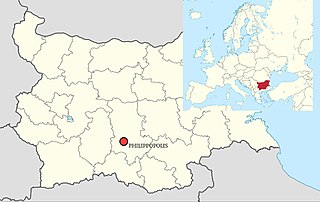 W
WThe Siege of Philippopolis was fought in about 250 between Rome and the Goths during the invasions of 249–253 at the Thracian city of Philippopolis, modern Plovdiv, Bulgaria. It was part of the long-running series of Gothic Wars.
 W
WThe Battle of Suthul was an episode of the Jugurthine War. The battle was fought in 110 BC between the Roman force led by the legate Aulus Postumius Albinus and the army of Numidia, led by King Jugurtha. In 110 BC, the consul Spurius Postumius Albinus invaded Numidia, but left soon after to prepare elections in Rome. His brother Aulus Postumus Albinus got the leadership of the Roman army, but was easily tricked by Jugurtha, who trapped the Romans near the town of Suthul, which may be the same location as Calama, near modern-day Guelma in Algeria.